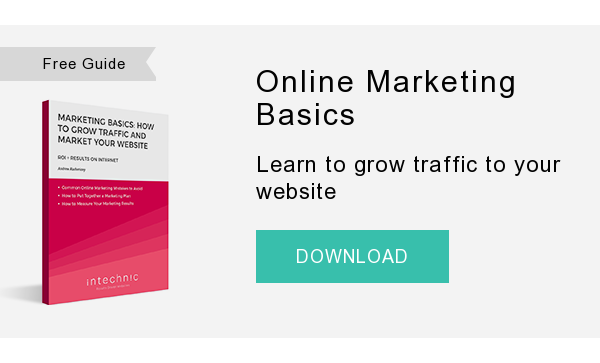 As I mentioned in 10 Online Marketing Mistakes and How to Avoid Them, you need to have a marketing plan for your website. A comprehensive digital marketing plan will help direct your day-to-day activities, guide your approach, measure your successes and failures and ensure that you are getting the most from available resources. If you’re intimidated by the idea of developing a marketing plan for your website, don’t worry—it is actually easier than you think. Writing an effective digital marketing plan doesn't have to be complicated and time consuming. To make things easier, we’ll just tackle the first 5 steps in this blog post. In the next post, we’ll do the last 5 steps. Sound good? Great, let’s get started!
As I mentioned in 10 Online Marketing Mistakes and How to Avoid Them, you need to have a marketing plan for your website. A comprehensive digital marketing plan will help direct your day-to-day activities, guide your approach, measure your successes and failures and ensure that you are getting the most from available resources. If you’re intimidated by the idea of developing a marketing plan for your website, don’t worry—it is actually easier than you think. Writing an effective digital marketing plan doesn't have to be complicated and time consuming. To make things easier, we’ll just tackle the first 5 steps in this blog post. In the next post, we’ll do the last 5 steps. Sound good? Great, let’s get started! 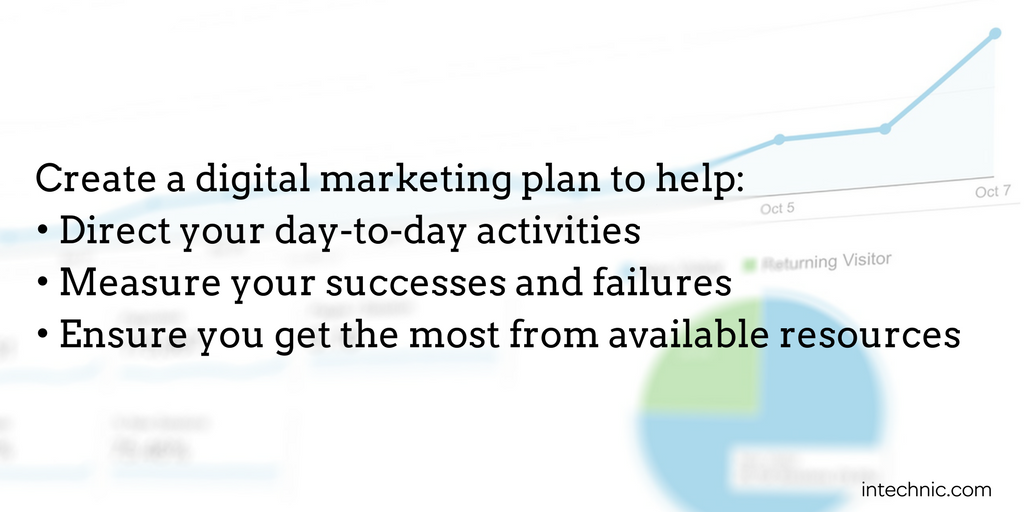
Step 1. Set SMART Marketing Goals
Establishing SMART website goals is the first step in developing a marketing plan. The goals for your marketing should be the same as those you defined for your website. Start with your website's SMART (Specific, Measurable, Attainable, Relevant and Timely) business objectives and think about how you can use marketing to achieve these goals. Then set SMART goals for each of your marketing campaigns.
- Specific – What do you want your marketing to accomplish? Be specific. Do you just want to drive more traffic to the website, or do you want to generate more leads or sales? Are you interested in increasing brand recognition or improving the brand perception?
- Measurable – Figure out how you will measure the results of your marketing campaign.
- Attainable – Be realistic about whether the goal is attainable with your budget, time and resources. With any kind of marketing activity, it is easy to lose track of time and money. Setting specific budgets and time limits will prevent you from overextending your resources on a phase that might not produce desirable results.
- Relevant – Next, ask yourself how reaching your marketing goals will help reach your business objectives. It is very easy to get excited about increasing your website traffic, Twitter followers or Google ranking, but how does all this benefit your business' bottom line? There has to be a direct correlation.
- Timely – Set time limits for all your marketing campaigns so your expenses are capped, and measure performance in time increments that allows you to compare results side by side.
Step 2. Target High-Value Customers (HVCs)
In “How to Calculate Customer Lifetime Value (CLV) to Market to High Value Customers”, we talked about the importance of knowing your ideal High-Value Customers (HVCs). Naturally, the visitors you want to come to the website must fit the same profile. You goal is to have visitors convert into high-value customers who generate most profits for your company. Think about drawing in loyal customers, who will remain loyal for the long run and generate recurring revenue for your business. If your website's visitors don't represent the target audience for which the website was built, this traffic will have minimal value. You will see high bounce rates with very little traction. Even if some of these visitors do convert, they probably won't be your best customers. On the other hand, if you know and understand your market and your target audience, you can create marketing campaigns specifically designed to appeal to them. You can also prequalify potential customers by focusing on ideal customers who are most valuable to your business and weeding out the rest. 

Step 3. Understand How to Reach Your Targets
Now that you know your high value customers, you will need to identify the best ways to reach them. From there you can design tactical programs that can be turned into effective marketing campaigns. To do that, ask yourself the following questions about your existing customers, or better yet, interview them. Think of your best customers that you'd love to clone. You want to talk to these customers. You want to find a way to bring in more customers like them. Understanding how they think and understanding the path they would take to reach your website allows you to focus your efforts on a marketing strategy tailored specifically for them. I find that most customers are happy to share this information. Just call some of your best customers, and talk to them about their experience. We’ve written an article that discuss how to interview your customers and another that gives some good tips for making the most of your customer interviews. Try to interview as many customers as possible. Write down their answers and look for trends and similarities. You should be able to detect emerging patterns in ways your customers reach out to companies like yours. Once you’ve finished, create personas to help guide your marketing strategy and map out the customer journey to understand the purchase process from your prospects’ perspectives. 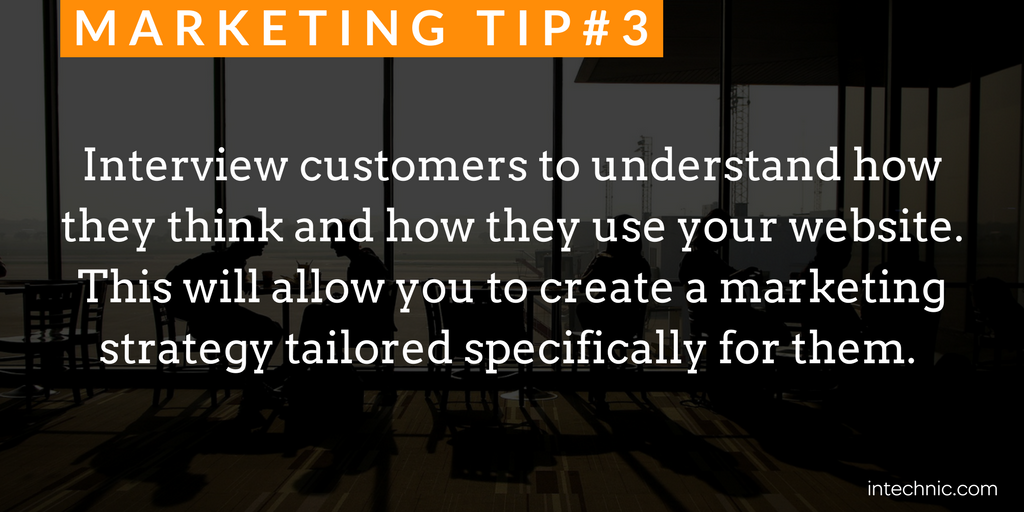
Step 4. Plan Your Tactics
At this point, you should already have a lot of information about your customers. You know who they are and you have a strategy to reach them. Now let's go into the tactics of this strategy. Think of your marketing dollars as soldiers, and you are a general who sends them to war. You want your soldiers to win or capture the prisoners. You don't want to lose your soldiers on the battlefield. If all your soldiers are dead, you just lost the war. Good tactics are essential to your ultimate success. In marketing, tactics are often called campaigns. Organize all your marketing activities into campaigns (or “battles”). Your ultimate goal is to win the war. Winning each campaign will help you get closer to your goal. There are many ways to market your website: search engine optimization, social media marketing, content marketing, pay-per-click, e-mail, etc. There is no magic formula for marketing success that will work for everyone. What works depends on a number of elements, such as your business model, your industry, the target audience, your products and services, the pricing model, your sales cycle, your competition and sometimes even luck. Never rely on a single tactic. Instead, use an integrated approach to deliver a consistent message across multiple platforms. 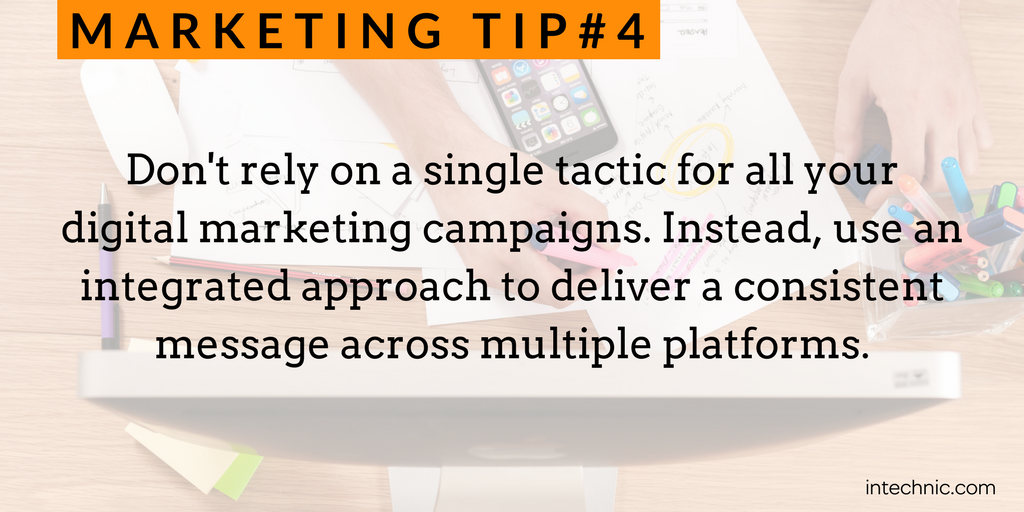
Step 5. Research Your Competitor's Marketing
One of the best things you can do for your marketing strategy is to research and study your competitor’s marketing techniques. You can then adopt a proven marketing strategy and even improve on it. This is not an invitation to copy someone else’s work. This is your chance to create a better marketing plan, based on your knowledge of what works. The best marketing results come from experimentation and trial and error. This is how you ultimately learn about what works and what doesn't. However, you have to be clever about it. Don't learn from your own mistakes. It’s too costly. Instead, learn by research. In “10 Best Tools for Website Competitive Research and Analysis,” we talked about competitive research and intelligence. There are many tools that show your competitors’ use of SEO and social media. You can even estimate their traffic and the associated demographic. Factor your research results into your marketing plan as much as possible. Finally, don't forget to talk to your existing and prospective customers. If they have working experience or history with your competitors, they may be able to offer valuable insight regarding the competitor’s marketing strengths and weaknesses. Involve your customers in your competitive analysis by asking them to compare your business to your competitors. 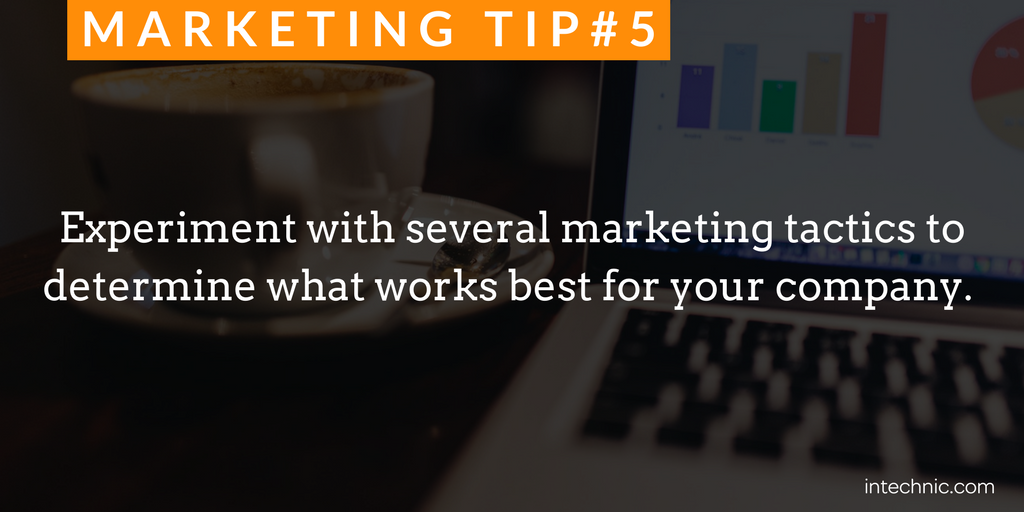 And now, we’re halfway there to fleshing out a marketing plan for your website. Next, check out How to Write an Effective Digital Marketing Plan – Part 2, where we’ll discuss the execution of your marketing plan.
And now, we’re halfway there to fleshing out a marketing plan for your website. Next, check out How to Write an Effective Digital Marketing Plan – Part 2, where we’ll discuss the execution of your marketing plan. 